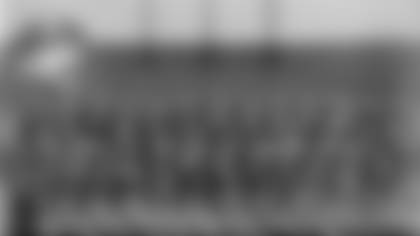Ron from Reedsburg, WI
In Chuck Frederick's book, "Leatherheads of the North," the author states that "paper companies of Northeastern Wisconsin helped the Packers (page 119)." Frederick is speculating as to whether the mining companies in Northeast Minnesota could have aided the Duluth Eskimos to remain a viable franchise. My question for you is: Were there paper mills that supported the Packers and if so, in what manner? I grew up in the northern Fox Valley region. I have relatives that go back generations who are/were millworkers. They ranged from Green Bay, De Pere down to Combined Locks, Appleton and Menasha. The reference in "Leatherheads of the North" to paper mills helping the Packers is the first I have ever come across.
Frederick quoted what Ole Haugsrud told the Duluth News Tribune in 1975. And Haugsrud was certainly a credible source, at least to a degree. A native of Superior, Wis., Duluth's twin city, he was secretary-treasurer of the Duluth Kelleys in 1924, the city's second season in the NFL, and was owner for the team's last two NFL seasons in 1926 and '27 when it played under the nickname Eskimos.
Green Bay vs. Duluth was an early rivalry. The two teams played a non-league game in 1922 and then five league games from 1923-27. I also believe Haugsrud became a friend or at least a close ally in league meetings of the executive committee members who ran the Packers once the public Green Bay Football Corporation was formed in 1923.
Here's what Haugsrud said in "Leatherheads" in reference to the Packers' survival: "It was about that time that the paper mills were coming into Green Bay and there are … big mills down there now. Those … mills were naturally looking for young people. You think of New York and Chicago as big cities, and they were in those days, but jobs were tough to get. In Green Bay, they had jobs to offer, and good ones."
In a general sense, Haugsrud was spot on about the Packers luring players with a job program. And I have no doubt that it played a big part in their survival and, in turn, would have hurt Duluth if it didn't have one.
Thus, when presented in that context, I'd take Haugsrud at his word. At the same time, I wonder if Haugsrud didn't exaggerate the role of the paper mills as it related to the Packers' jobs program, especially because he spoke on the subject some 40 years after the fact. My guess would be that he referenced the mills simply because papermaking was still a leading Green Bay industry.
Without question, the Packers' jobs program helped Curly Lambeau recruit players to Green Bay.
"Most of the men who play on the Packer team have obtained positions in Green Bay and are making the city their permanent residence," read a story about the Packers that appeared in "The Wisconsin Magazine: Special Green Bay Edition," in May 1929. "Some have entered the professions here and others have gone into business."
In 1934, in the Green Bay Press-Gazette's first in-depth history of the Packers, team co-founder George Whitney Calhoun wrote: "Ever since its organization, the Football(sic) corporation has attempted to place the Packer players in positions here. An all year round residence enables the gridders to catch the Green Bay spirit and the old civic pride helps a lot when a team is battling to keep its door step clean."
Five years later, Lambeau talked about how the Packers were putting even more emphasis on their jobs program following the 17 months they had spent in receivership in the mid-1930s.
"We now have an employment committee and are taking in the whole state in our search for positions," Lambeau told the local Kiwanis club in a talk at the Northland Hotel on June 26, 1939. "Wisconsin as a whole has adopted the Packers and is taking a personal interest in the men. High salaries paid by some of the other teams is one of our problems. If we can give the employment of men full consideration, we can help win the battle."
There also was this item in the Packers' 1940 publicity book: "Many of the Green Bay businessmen who are now actively supporting the Packer team were former players."
I'll admit, I wish would have been able to uncover more specifics about the jobs program to write about in more detail in our book, "The Greatest Story in Sports." However, I have yet to find the names of the companies that participated, whether players worked those jobs only in the offseason and how many took advantage of it.
I wouldn't be surprised if there were several players who worked at the paper mills in the Packers' first two decades, but those weren't the only jobs available to them. Also, by the late 1920s, at the latest, most of the Packers players probably had spent close to four years in college. That's not exactly the period Haugsrud made reference to. But an obvious question would be: How many college graduates were working on paper machines in the bowels of the city's mills?
For example, in his 1934 story, Calhoun used Verne Lewellen as his prime example of a player who took advantage of the program. "He came here … after graduating in law from Nebraska," Calhoun wrote. "Lewellen was taken in by a local law firm and soon after passed the state bar examination."
Again, no question about it, the people of Green Bay threw out their welcome mats to the Packers players when they landed in town, and it played a critical role in the team's survival, as I wrote in "The Greatest Story in Sports."
So did Green Bay's economy, especially during the Great Depression years of the 1930s, because it was largely based on two essentials of life: food products, namely cheese, and paper products, toilet paper being first and foremost. Better yet, it also was a transportation hub with three railroads, a waterway to the Great Lakes and a growing highway system that allowed for easy shipment of those products.
As a result, unemployment and impoverishment didn't hit Green Bay like they did in most of the country in the 1930s.
Frankly, plenty of writers have painted a false picture over the years of the paper industry's role in financially supporting the Packers. But that really wasn't the case in Frederick's book, "Leatherheads of the North."
In the first public stock sale in 1923, only about 100 of the 1,109 shares sold were purchased in the names of businesses, and those included small shops like Linck's Shoe Store, Schefe's Meat Market and DeClerc Flower Shop. Shares were priced at $5, and the most any person or business purchased was 20 or $100 worth. In all, there were 204 shareholders.
The second stock sale took place when The Green Bay Packers, Inc., a new corporation that replaced the one that went into receivership, was organized in January 1935. And that corporation remains in place today.
In that sale, 484 shares were sold at $25 apiece, and most were purchased in the names of Green Bay's largest companies. Hoberg Paper and Fibre Co. bought the most shares, 40, at a cost of $1,000 but did so anonymously. In 1953, Hoberg Paper was renamed Charmin Paper Mills to more closely identify the company with its line of paper. Northern Paper Mills was one of several companies in 1935 that purchased $500 worth of stock or 20 shares. Northern has undergone several name changes, and its old mill on Green Bay's north side was recently shut down but it survives in a sense under the current company, Georgia-Pacific.
When the Packers reorganized in 1935, both Hoberg and Northern were also represented on the team's 20-man board of directors by L.G. Wood and H.G. Wintgens. Wood was vice president and assistant general manager at Northern; Wintgens was head of sales at Hoberg. In other words, the mills were represented largely because of their stock purchases, but unlike several other companies, it wasn't their top executives who served on the Packers board.
Interestingly, Fort Howard Paper Co., which began producing paper in 1920 and was purchased by Georgia-Pacific in 2000, didn't buy stock in the Packers in any of the first three sales: 1923, 1935 or 1950. Austin and John Cofrin, its first two presidents, didn't purchase stock, either. At one time, Fort Howard was Green Bay's largest employer while also ranking among the most profitable paper companies in the world.
Along with Hoberg and Northern, it also should be noted that Bay West Paper, purchased $250 worth of Packers stock in 1935.
I think it's safe to say that two of Green Bay's three biggest, locally owned mills in the 1920s and '30s contributed and probably substantially to the Packers' cause. But my sense is there were other companies that helped even more.
I can't prove this, but my guess would be that Schuster Construction Co. of nearby Denmark, Wis., would have been one of them. Schuster built roads and highways and might have employed more Packers as common laborers than any other company. That, no doubt, contributed to company president Ed Schuster sitting on the Packers' board for one of the longest periods in franchise history. Schuster was a member of the board from 1935 until 1980, when he was given emeritus status.
For example, I found this item in the Aug. 22, 1929, Press-Gazette: "When (Tiny) Cahoon is right he can play tackle with the best of them. For the past six weeks, he has been getting ready for a strenuous gridiron campaign by working with the Schuster Construction company of Denmark on road jobs. Claude Perry, another Packer player, is also with this company."
One final point. The jobs program, in essence, was still in effect in the 1950s. For example, Veryl Switzer, one of the Packers' first Black players, worked as an assistant manager for Farah's Liquor Store. Bart Starr worked as an offseason salesman for Green Bay General Tire early in his career.
There also were Packers over the years who owned their own businesses. Don Hutson was one in the 1940s. He owned a bar and bowling alley in downtown Green Bay, and Buckets Goldenberg was a partner for at least part of the time.
Jonathon from Sierra Vista, AZ
All four of my brothers and myself are Packer fans instilled by our late father who grew up in a Catholic orphanage in Green Bay from 1929 to 1942. He used to tell us how he and a few of his orphanage buddies would sneak out of their rooms to go to City Stadium to watch Packers games. He said they would sneak into the games by crawling under a tent. The only thing that I can picture in my mind is that perhaps tickets were sold in a canopy of some type which led to the stadium seats. In every photo I see of City Stadium, I do not see anything that resembles a tent. I was wondering if in your knowledge how this "crawling under a tent to get into the games without paying" makes any sense.
I'm going to start by praising your dad's memory. I'd trust every story he told you. I would have loved to have heard some of them. The home where he grew up in was St. Joseph Orphanage in the then town of Allouez, just shy of three miles from old City Stadium.
One of the reasons history gets muddled is because people think of places and sites as they remember them or know them now and assume that's how they always looked. And, sadly, it happens too often with City Stadium, home to the Packers from 1925-56.
You're right, almost all of the pictures of the stadium in existence today are of the period when it was enclosed by a wooden fence on the north, south and east sides and had all-wooden bleachers and/or grandstand.
But here's what I wrote on page 129 of my book "Packers Heritage Trail; The Town, The Team, The Fans from Lambeau to Lombardi": "At first, a wooden fence enclosed City Stadium. In 1927, it was replaced by wire and lined with a heavy canvas. Eight years later, the wire was removed and replaced, again, by boards."
City Stadium was only two years old when the original boards were replaced, but it's possible the wood was older than that and perhaps previously used at both Hagemeister Park and Bellevue Park.
Here are the last six lines of a one-paragraph story that appeared in the Press-Gazette on Aug. 11, 1927: "The old wooden fence has been removed and a woven wire fence built in its place. This new fence will be lined with a heavy canvas that will make things difficult for the knothole gang."
So not only was your dad's memory laudable but those kids from the orphanage must have outsmarted the Packers' efforts to thwart their sneaking into games.
The decision to replace the wire and canvas was reached on Jan. 18, 1935. "The decision of the grounds committee to substitute a board fence for the wire now enclosing the East High athletic field was approved by the board of education at its regular meeting last evening on the understanding that school officials had requested the change because of the difficulty of policing the grounds under present conditions …," the Press-Gazette reported on the day after the vote.















